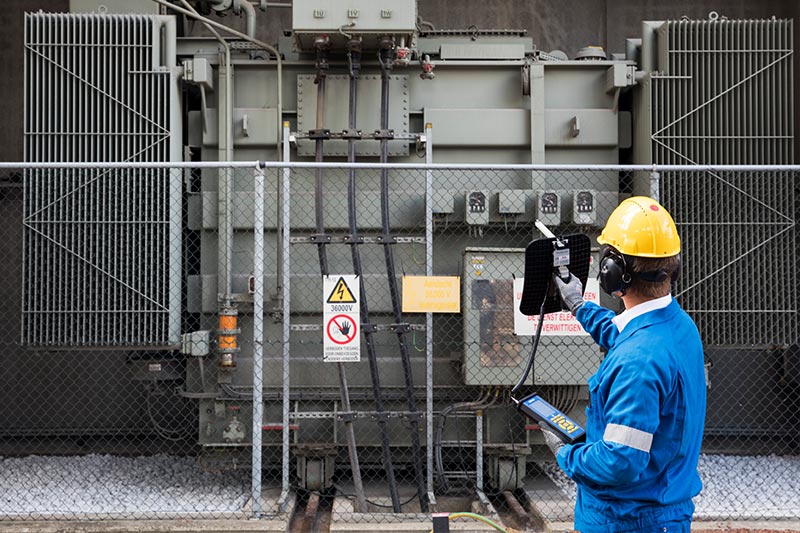Electrical Equipment Fault Detection
How to detect electrical equipment faults? Safely Inspect Electrical Systems with Ultrasound
Electrical failures pose a tremendous safety threat and have the ability to shut down operations entirely
Industrial plants require a lot of power to operate, and much like the machinery required for production, their electrical systems can also fail. When they do, the results pose tremendous threats to production and the safety of everyone within the facility. The same threats are immanent on the power production and distribution side.
The Importance of Maintaining your Electrical Systems
The implications of a total electrical system failure are far more severe than that of an ordinary mechanical failure. They have the potential to damage equipment, cut power flow and cause downtime for days, seriously injure or kill workers in the immediate vicinity and even impact the surrounding areas power grid. Fortunately, regular ultrasound inspections can help detect faults in electrical systems at their earliest stages and therefore prevent them far before anything catastrophic happens.

The Dangers of Electrical Arc Flash
The NFPA states that arc flash is “a dangerous condition associated with the release of energy caused by an electric arc. They can cause a series of explosions generating between 5,000-35,000°F / 2,760-19,427 °C.” Subsequently, the power generated from these explosions are enough to seriously injure or kill anyone within the vicinity of the blast.
Detecting electrical faults with equipment, especially arc flash is best done combining both infrared and ultrasound technology. Indeed, both technologies have their strengths when it comes to fault detection, but ultrasound excels at detecting faults long before infrared would be able to.
The Earliest Way of Detecting Electrical Systems Failures
Ultrasound inspection can be performed on both open access and enclosed electrical equipment at any voltage. Electrical apparatuses like switchgear, transformers, insulators or disconnects and splices can all fail but long before they do, the faults can be detected.
Unlike electrical infrared thermography inspection, ultrasound devices can detect discharges in their earliest stages, long before they begin to generate heat.


Choose the Ultrasound Detector that suits your needs:













